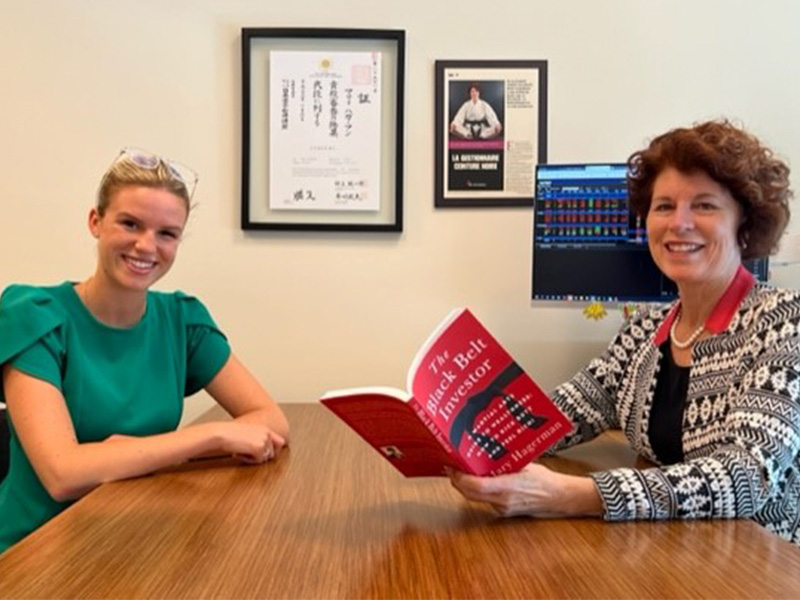
As young people embark on a lifetime of saving and investing, they need to understand the role of ETFs in the investment landscape. If we want to serve our clients’ children, we must be comfortable teaching the basics of investing.
I had the opportunity over the summer to employ Meghan McCarthy, a third-year finance student at Bishop’s University, as an intern. She told me she was curious about ETFs and didn’t really understand how they differed from mutual funds.
Here, I share her questions and my answers to help you understand what young investors need to know about ETFs.
Q: I understand that mutual funds are essentially a basket of stocks or bonds that are managed by a fund manager and are purchased as a whole for a fee. My understanding of ETFs is quite similar, but I know they differ. So what is the difference between an ETF and mutual funds?
A: Mutual funds have been around for a long time, and many investors understand that they represent a diversified basket of stocks, bonds and other securities that are managed by a fund manager. Mutual funds became a popular way for investors to diversify their holdings using an experienced money manager.
A mutual fund manager selects stocks and bonds that meet the fund’s mandate. The fund will charge a management fee, which when combined with operating fees, results in a management expense ratio (MER). The MER can range from 0.5% to 1.5%, sometimes more. Bond mutual funds usually have lower MERs than stock, or equity, mutual funds.
Mutual funds are purchased at the market close when all underlying stocks have settled. ETFs, on the other hand, are traded on an exchange and can be bought and sold throughout the day as the price changes.
The first ETF was launched in Canada in 1990 and used what’s known as “passive management.” The goal of passive management is to simply replicate the performance of a major index with a basket of stocks that is rebalanced periodically. ETFs now can be either passively or actively managed (see below) and use algorithms or rules to track a given index. As a result, they tend to have lower MERs than comparable mutual funds.
With mutual funds, a fund manager is hired to add “alpha” to the fund’s return, a.k.a. excess return, through what is known as “active management.” This active return generated by the manager should exceed the MER charged, but that doesn’t always happen.
For example, industry reports like the S&P Indices Versus Active (SPIVA) have long demonstrated that most actively managed funds underperform the index to which they are compared (known as the “benchmark”). According to the most recent SPIVA report for Canada, between 57% and 95% of Canadian mutual funds underperformed their indexes over the past 10 years.
Q: If mutual funds don’t outperform, why use ETFs instead?
A: I began using passively managed ETFs after the Great Recession of 2008–2009. After reviewing industry statistics like the SPIVA reports, I realized that most active managers of mutual funds weren’t adding alpha to their fund’s performance, only additional fees.
Because of their structure, ETFs offer a diversified, lower-cost alternative to actively managed mutual funds. Bond ETFs will usually have a lower MER than equities ETFs.
I decided that I was not going to pay extra for a mutual fund manager if I didn’t have a very good chance of beating the index the manager was using as a benchmark.
Q: Is it possible for a mutual fund to compare itself to an index or does that make it an ETF?
A: Regardless of whether you are using an ETF or a mutual fund to invest, you need a measure of comparison to let people know how good a job you are doing. As mentioned, this is known as a benchmark.
As I illustrated earlier with the results of the SPIVA report, the manager of a U.S. equity mutual fund will compare their returns to an index that is comparable to their portfolio’s composition. In this case, an appropriate benchmark for U.S. stocks is the S&P 500.
A mutual fund manager generally does not attempt to replicate their benchmark index. Instead, they use their stock-picking skills to select what they feel are the best stocks in their index universe. They will use the benchmark index to illustrate how much alpha they are generating.
If the manager can show that their returns and stock-picking methodology consistently yield better results than the index after fees, and possibly with fewer ups and downs (“ups and downs” are known as volatility), then the manager has a case for attracting investors to the fund. If the results are not compelling, then an investor may want to choose a better-performing mutual fund or an ETF that passively tracks the mutual fund’s benchmark index instead. As discussed, such an ETF will match the return of the index minus fees.
The same logic applies to bond funds. Investors have the choice of using a bond fund or a bond ETF, or a combination of both.
In our next instalment of our Q & A with Meghan, we’ll look at questions regarding the use of ETFs in portfolio construction.
